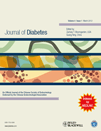Locating the source of hyperglycemia: Liver versus muscle
Abstract
Background: Glucose homeostasis relies on insulin to suppress hepatic glucose production and to stimulate glucose uptake by peripheral tissues (primarily skeletal muscle) during and after a meal or glucose load. Glucose metabolism impairments in the liver and/or muscle attenuate these insulin actions, causing hyperglycemia. Thus, identifying the loci of the impairments can improve the understanding of hyperglycemia and enable organ-targeted interventions.
Methods: Studies were performed to identify such loci using modified oral glucose tolerance test (OGTT) techniques in individuals with type 2 diabetes (T2D) and overweight/obese individuals.
Results: Individuals with severe T2D were found to have significantly impaired glucose metabolism in both the liver and muscle. In contrast, impairments in glucose metabolism in individuals with non-severe T2D were predominantly localized in the liver or muscle, but not both. Similarly, milder impairments in overweight or obese individuals were clearly localized in either the liver or muscle, but not both. All these impairments are quantifiable.
Conclusion: Impairments in glucose metabolism in the liver and muscle can be differentiated and quantified in a clinical setting.




